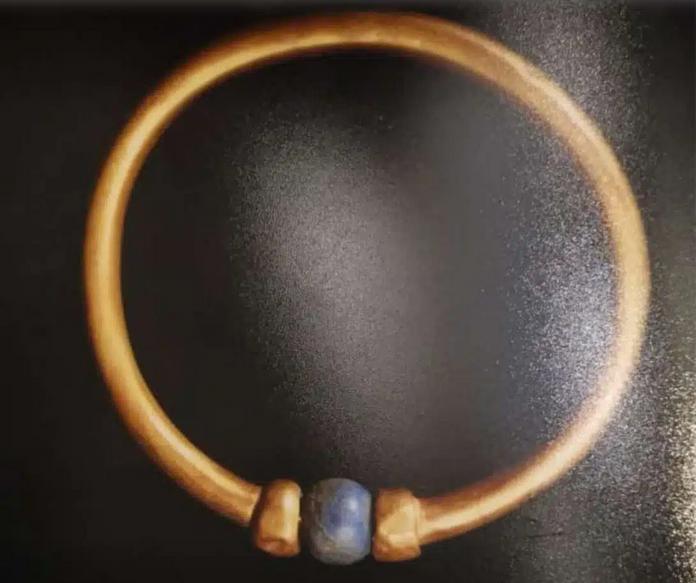3,000-Year-Old Pharaoh’s Bracelet disappears from Egyptian Museum

Egyptian authorities are investigating the disappearance of a 3,000-year-old gold bracelet linked to a pharaoh of the 21st Dynasty.
The bracelet vanished from the restoration laboratory of the Egyptian Museum in Cairo’s Tahrir Square, according to the Ministry of Tourism and Antiquities.
The bracelet, decorated with a lapis lazuli bead, was last registered in the museum’s internal documentation before it went missing. Officials have referred the case to law enforcement and the public prosecution office. While the exact date of its disappearance remains unclear, the investigation is ongoing.
The artifact is believed to have belonged to King Amenemope, a relatively obscure pharaoh who ruled during Egypt’s Third Intermediate Period, between approximately 1076 and 723 B.C.
According to the museum’s website, Amenemope was initially buried in a small, single-chamber tomb—designated NRT IV—at the royal necropolis of Tanis in the eastern Nile Delta. His remains were later reinterred next to Psusennes I, a more prominent ruler of the same era. The tomb was rediscovered in 1940.
In an effort to prevent potential smuggling, authorities distributed an image of the missing bracelet to all airports, seaports, and land border crossings in Egypt. The ministry called the action a precautionary step.
In response to the incident, the Ministry of Tourism and Antiquities has ordered a complete inventory of all artifacts currently stored in the museum’s restoration lab. A specialist committee will oversee the review to ensure that no other items are missing.
Main Image: The missing 3,000-year-old gold bracelet, once owned by Pharaoh Amenemope, disappeared from the Egyptian Museum’s restoration lab. Credit: Ministry of Tourism and Antiquities
